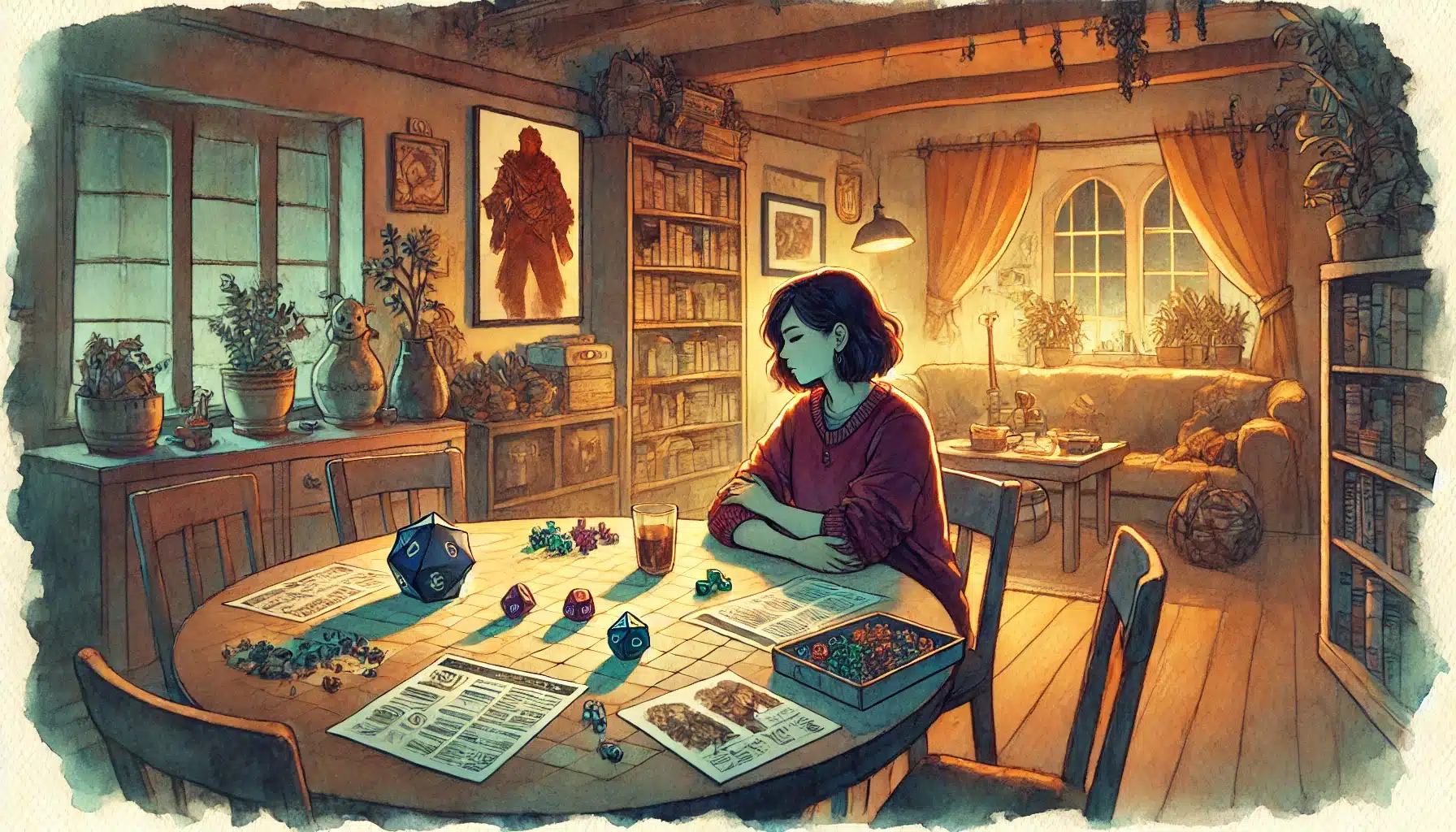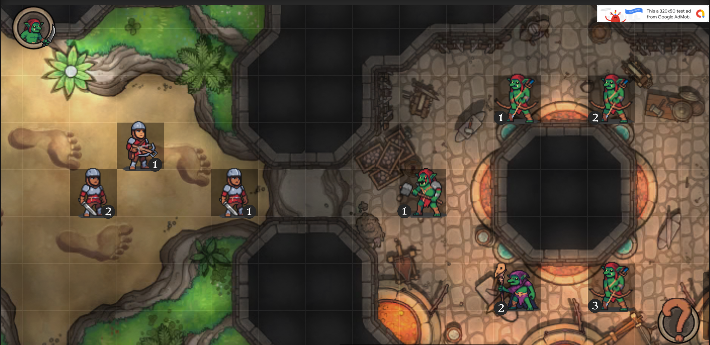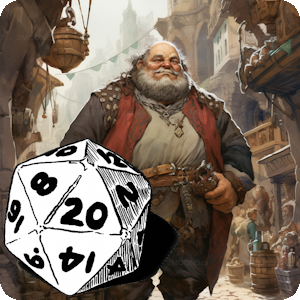Dungeons are the heart of many tabletop RPGs, providing challenges, mysteries, and rewards for players to discover. Whether you’re running a classic Dungeons & Dragons campaign, or another tabletop role-playing game, crafting a well-designed dungeon can elevate the excitement and immersion of your game. But how do you build a dungeon that feels fresh, engaging, and challenging? In this guide, we’ll walk you through the process of creating memorable dungeons for your next RPG adventure.

Step 1: Establish the Dungeon’s Purpose
Every good dungeon serves a specific purpose in the story or campaign. Before you start mapping, think about why the dungeon exists and what it represents. Consider the following questions:
- What is the dungeon’s history? Is it an ancient ruin, a recently discovered cave system, or a long-forgotten underground temple?
- Who built it, and why? Was it constructed by an ancient civilization, a powerful wizard, or a monstrous race? Perhaps it was meant to protect something valuable or hide dark secrets.
- What motivates the players to enter? Do they need to retrieve an artifact, stop an evil cult, or rescue a captive? Are they hunting treasure or pursuing a villain?
Once you understand the dungeon’s backstory and the players’ objectives, you can make its design work toward the overall narrative.
Step 2: Choose a Dungeon Theme
A theme helps set the tone for the dungeon and guides your design choices. Some themes are specific to certain genres or settings, while others can work across multiple campaign types. Here are a few common dungeon themes to get you started:
- Abandoned Ruins or Catacombs: Filled with traps, undead creatures, and forgotten treasures, these dungeons feel eerie and dangerous.
- Caverns or Natural Caves: These might be home to all sorts of wild creatures, like goblins, trolls, or giant spiders, and their layout will feel more organic and less structured.
- Fortresses or Strongholds: Perfect for when you want to design a dungeon with a military or political purpose. These might include guard posts, traps, and formidable enemies.
- Magical or Elemental Sites: These could feature puzzles, magical hazards, and strange creatures tied to specific elements, like fire, ice, or arcane energy.
Choose a theme that suits your campaign and resonates with the players’ expectations. A strong theme will give the dungeon personality and consistency.
Step 3: Sketch Out the Layout
Now that you have a theme, it’s time to start designing the dungeon’s physical layout. There are several approaches to this:
- Linear Layout: The dungeon is a straightforward series of rooms or corridors where the players move from point A to point B. This can be effective for more narrative-driven experiences, where you want to tightly control the flow.
- Branching or Non-linear Layout: This type of dungeon has multiple paths and areas to explore, allowing for a more open-ended experience. Players can take different routes, uncover hidden secrets, or face different challenges depending on their choices.
- Complex or Maze-like Layout: A labyrinthine dungeon filled with dead-ends, multiple levels, and interwoven corridors can keep players on their toes. This is ideal for a dungeon that challenges players’ navigation and problem-solving skills.
When sketching out the layout, consider:
- Room Placement: The placement of rooms should make sense both narratively and logistically. Do the chambers flow logically, or does it feel too disjointed?
- Verticality: Don’t just design in 2D. Add elevation changes, like stairs, pits, or hidden passages, to give your dungeon depth.
- Keys & Secret Doors: Hidden doors or passages that lead to treasure or shortcuts add mystery and replayability.
- Areas of Interest: Make sure there are points of intrigue in each section of the dungeon. Whether it’s a monster’s lair, a hidden treasure, or a complicated puzzle, you want to encourage exploration.

Step 4: Populate the Dungeon with Encounters
Once the basic structure is in place, it’s time to fill your dungeon with encounters. This includes combat challenges, puzzles, environmental hazards, and non-combat obstacles.
- Combat Encounters: A well-balanced dungeon will feature a mix of combat encounters to keep players engaged. The type of enemies depends on the dungeon’s theme:
- Undead and Constructs in a crypt or abandoned temple.
- Elementals or Fae Creatures in a magical or elemental dungeon.
- Humanoid Monsters (like Goblins or Orcs) in caves or strongholds.
- Puzzles and Traps: These add a layer of challenge beyond combat. Design puzzles that tie into the dungeon’s theme and backstory. For example:
- A pressure plate puzzle that opens a door in an ancient ruin.
- A riddle guarding a treasure chest.
- A trap-laden corridor that requires quick thinking to avoid deadly spikes or falling rocks.
- Environmental Hazards: Use the dungeon’s setting to create danger. For example:
- Collapsing ceilings in a cave.
- Lava flows in an elemental temple.
- Flooded areas in an underwater dungeon.
These hazards can add tension and force players to think strategically.
- Non-Combat Encounters: Consider adding NPCs, merchants, or other characters that players can interact with. Perhaps the dungeon is home to a neutral faction or a group of survivors who can help—or hinder—the players.

Step 5: Layer in Story and Atmosphere
Dungeons aren’t just about the physical layout and encounters; they’re also about the story and atmosphere. Here are a few tips to bring your dungeon to life:
- Themes and Foreshadowing: Foreshadow future challenges or major plot points. If the players are about to face a powerful dragon, hints can be dropped in the environment, like charred corpses or scorch marks on the walls.
- Environmental Details: Describe the sounds, smells, and visuals of the dungeon. Is it damp and musty? Do echoes bounce off the walls? Are there whispers in the shadows or distant growls?
- Hidden Lore: Scattered journals, murals, or inscriptions can reveal the history of the dungeon or provide clues about its inhabitants. This encourages players to look closer and immerse themselves in the world.
Step 6: Plan for Player Choices
A well-designed dungeon gives players choices. It allows them to explore and interact with the environment in meaningful ways. Think about how they might approach each room:
- Will they charge in recklessly, or will they try to sneak around?
- Do they negotiate with NPCs, or fight their way through?
- Can they solve puzzles, or do they need to brute-force their way to the goal?
These choices make each dungeon crawl unique and allow players to feel like they’re shaping their own adventure.

Step 7: Playtest and Adjust
Before running your dungeon for the first time, test it out. Think through possible player actions and be prepared to adapt on the fly. During the game, make note of any areas that feel too easy or too difficult, and adjust accordingly. Encourage player feedback to help improve future dungeon designs.
THAT’S IT!
Building a dungeon for a tabletop RPG is a creative and rewarding process that brings your campaign world to life. By considering the dungeon’s purpose, theme, layout, encounters, and atmosphere, you can create a space that challenges players, deepens the narrative, and provides a truly memorable experience.
So gather your dice, grab your map, and start building the next great dungeon for your players to explore!
